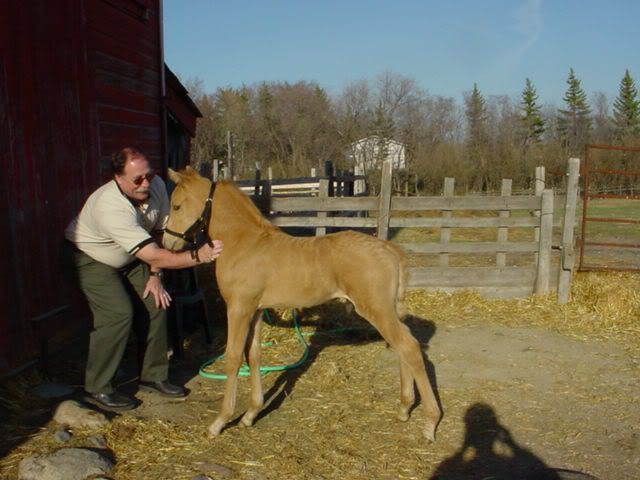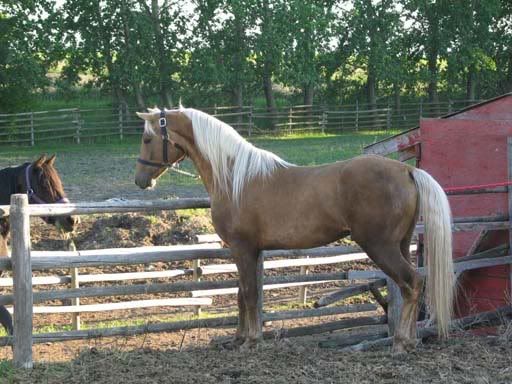Hi . I am curious about the color of our filly.What are your thoughts ? Also I would be really interested to hear your thoughts on how she got her color. The threads here on color really fascinate me but I must admit I do not understand everything I am reading. You folks are so informed. You amaze me. So if you can give me some info on our girl I would find it very interesting. Thanks so much!
Her dam is a buckskin paint with only a splash of white on her belly, her sire is black.
Does her color come from a gene in the dam or sire?
Here she is from newborn to current. She is now 4 months old.There is no dark coloring on her legs, mame or tail. her mane and tail are white . her nose appears darker but she is much lighter in color now than when she was born.
http://farm4.static.flickr.com/3070/296847...573593bb6_o.jpg
http://farm4.static.flickr.com/3125/280643...5b45902d7_o.jpg
http://farm4.static.flickr.com/3397/317745...569a14d65_o.jpg
Her dam is a buckskin paint with only a splash of white on her belly, her sire is black.
Does her color come from a gene in the dam or sire?
Here she is from newborn to current. She is now 4 months old.There is no dark coloring on her legs, mame or tail. her mane and tail are white . her nose appears darker but she is much lighter in color now than when she was born.
http://farm4.static.flickr.com/3070/296847...573593bb6_o.jpg
http://farm4.static.flickr.com/3125/280643...5b45902d7_o.jpg
http://farm4.static.flickr.com/3397/317745...569a14d65_o.jpg







